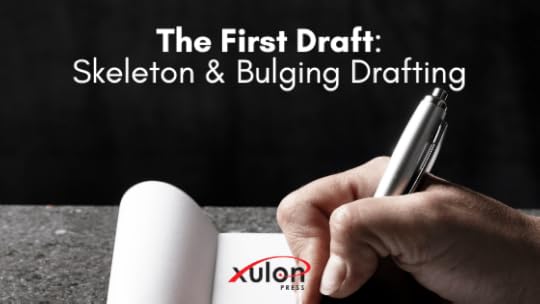The First Draft: Skeleton Draft or Bulging Draft

Just like there are two different types of plotting styles—plotting and pantsing—there are also two different camps writers fall into when it comes to how much writing goes into the first draft. There are writers who choose a skeleton draft, meaning they put the bones of their stories down during the first draft and then use subsequent drafts and rounds of revisions to continue to grow and fill out their manuscript until it’s complete. Other writers aim to put anything and everything down on paper during the first round, which is typically a bulging draft and way over word count. These writers spend their time cutting down their word counts during subsequent drafts and revisions. So, is there a right or a wrong way to write your first draft?
There Is No Right Way to DraftThere is no right or wrong way to write your first draft. You simply have to go with what feels most natural to you and understand the work you’ll need to add during follow-up drafts.
Skeleton DraftIf you decide to write a skeleton draft, my guess is you’re also a plotter. If so, use your outline to get you through your skeleton draft. Focus on putting your plot points on paper during your first draft.
Once your initial draft is written, read through the entire manuscript and make notes to yourself. Notes can include descriptions, filling plot holes, and adding overall life to your manuscript.
Continue following this process for additional drafts until you reach your intended word count and you are satisfied with your story.
Bulging DraftIf you find yourself writing a bulging draft, I’d guess you’re a pantser. This means you don’t follow an outline and let the story guide you forward without a set plan. This free flow style of writing is great because you won’t hold yourself up by trying to follow a set plan and you won’t try to control the direction of the story. On the other hand, however, you’ll most likely write more words and end up significantly over your intended word count. During follow-up drafts, strikethrough any text or language that feels unnecessary. Leave yourself notes where you’re rambling, so you can go back and clean up these sections. Check for plot holes, extensive descriptions, and that you’ve tied up all your loose ends by the end of the story.
As you can see, there is no right or wrong way to write your book, so choose the workflow that feels right for you.
Which type of writer are you? Comment below!
Interested in editorial services to help polish your final manuscript? Call 1-866-381-2665 to speak with a Xulon Press publishing consultant.
The post The First Draft: Skeleton Draft or Bulging Draft appeared first on Xulon Press Blog, Christian Self-Publishing.
Xulon Press Blog
- Peter Lopez Jr.'s profile
- 8 followers



